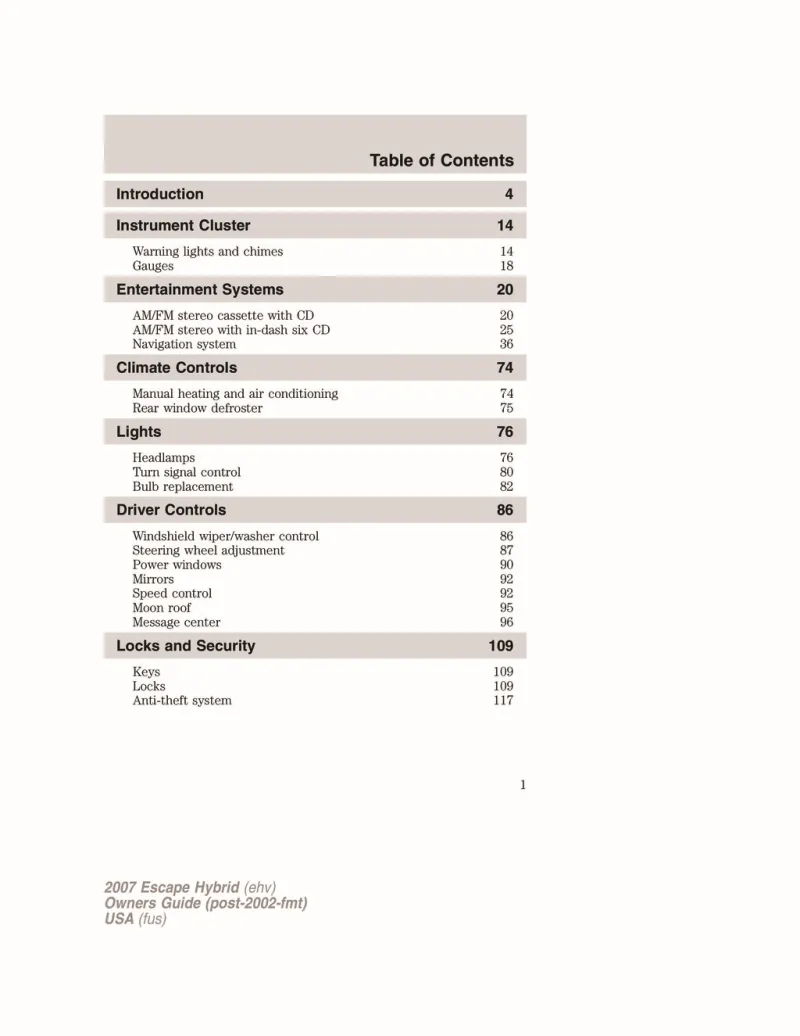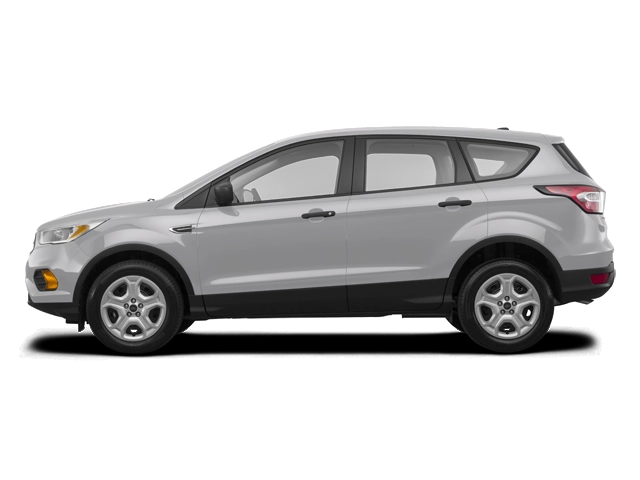2007 Ford Escape Hybrid Owner's Manual

Table of Contents
2007 Ford Escape Hybrid Overview
Introduction
The 2007 Ford Escape Hybrid is a forward-thinking compact SUV that combines environmental consciousness with practical utility. As one of the pioneers in hybrid vehicle technology, the Escape Hybrid offers an eco-friendly driving experience without sacrificing comfort or versatility. It’s designed for urban dwellers and adventurers alike, featuring advanced engineering that makes it a reliable choice for daily commutes or weekend getaways.
Powertrains
Under the hood, the 2007 Ford Escape Hybrid boasts a sophisticated hybrid powertrain that combines a 2.3-liter four-cylinder engine with an electric motor. This efficient system produces a combined output of 155 horsepower while delivering impressive fuel efficiency, offering up to 34 mpg in the city and 30 mpg on the highway. The hybrid system seamlessly transitions between gasoline and electric power, optimizing performance and minimizing emissions, making it an environmentally considerate option for drivers.
Trims
The Escape Hybrid is available in two well-equipped trims: the base Hybrid and the Limited Hybrid. The base Hybrid offers a comprehensive suite of features, while the Limited trim enhances luxury with additional amenities such as leather seating, upgraded sound systems, and heated front seats. Each trim maintains the hybrid design, ensuring drivers experience the benefits of reduced fuel costs and emissions without compromising on style or functionality.
Features
This model is packed with a variety of features designed for comfort and safety. Standard equipment includes air conditioning, cruise control, keyless entry, and a six-disc CD changer, while higher trims expand on technology with advanced audio systems and navigation options. Safety is also a priority, with features such as anti-lock brakes, traction control, and multiple airbags contributing to its solid performance in crash tests.
Owner's Manual
The owner's manual for the 2007 Ford Escape Hybrid is a comprehensive guide that provides essential information on maintenance, operation, and troubleshooting. It covers everything from the intricacies of the hybrid system to tips for maximizing fuel economy and ensuring the durability of your vehicle. This invaluable resource supports owners in making informed decisions and keeping their Escape Hybrid in prime condition.
User manual download
The Ford Escape Hybrid owner manual for the 2007 model year is to be found in PDF downloadable format on this page. The owner manual for the model year 2007 is free and in English, but the repair manuals are usually not easy to get and may cost more.
Manual Questions
Fill the form below and someone will help you!

